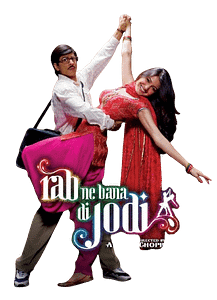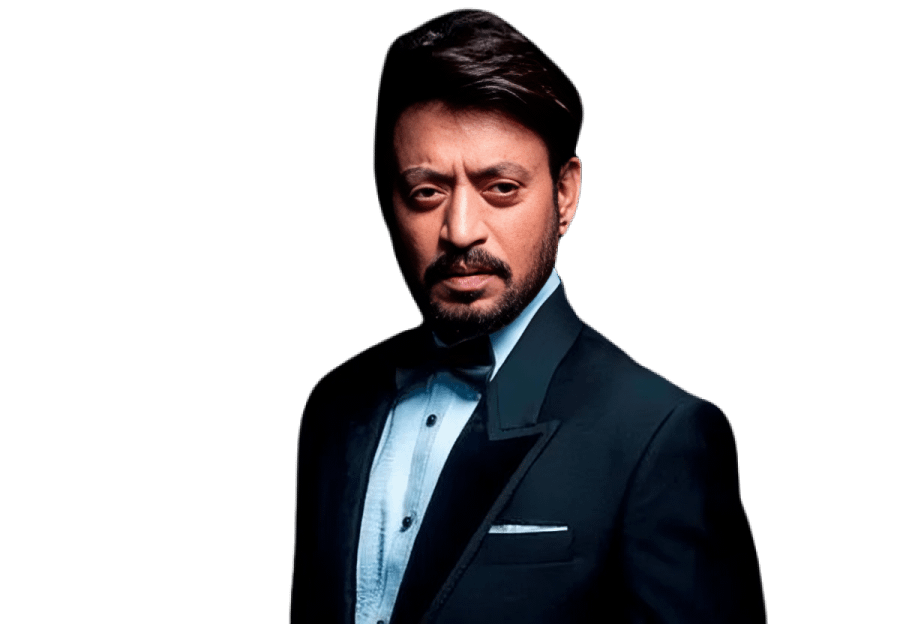Rab Ne Bana Di Jodi Film Introduction

Released in 2008 under the Yash Raj Films banner, SRK was a romantic drama that marked the directorial debut of Aditya Chopra after a long hiatus since Dilwale Dulhania Le Jayenge (1995). The film, set in the culturally rich lanes of Amritsar, Punjab, became one of the most talked-about Bollywood films of the year for several reasons—Shah Rukh Khan’s unique double role, the debut of Anushka Sharma, and its heartwarming theme centered around love, simplicity, and self-discovery. But one of the core elements behind the film’s success was its carefully thought-out casting decisions.
In this comprehensive 2000-word analysis, we explore the behind-the-scenes journey of casting, the choices that shaped each character, and how they brought magic to the silver screen.
-
Shah Rukh Khan as Surinder Sahni / Raj Kapoor
Dual Role: A Masterstroke of Simplicity vs. Charisma
At the heart of Rab Ne Bana Di Jodi lies the duality of Shah Rukh Khan character—Surinder Sahni and his flamboyant alter-ego Raj Kapoor. Casting Shah Rukh in this role was not just inevitable—it was destiny. Aditya Chopra knew that no other actor could capture both the awkward charm of Surinder and the exaggerated coolness of Raj quite like SRK.
- Surinder Sahni: A mild-mannered, bespectacled, and introverted government employee who believes in silent love and duty. SRK completely transforms into this everyday man—his posture, speech pattern, and even walk were reworked. His physical appearance, complete with high-waisted trousers, formal shirts, and oiled hair, represented the classic Indian middle-class man.
- Raj Kapoor: The polar opposite—flamboyant, talkative, and filmy. Shah Rukh based this character loosely on the exaggerated Bollywood hero archetype. His inspiration for Raj was drawn from 1970s Bollywood flamboyance, with over-the-top expressions, gelled spiky hair, and flashy clothing.
Rab Ne Bana Di Jodi Casting Process & Preparation
Aditya Chopra, during the scripting process, envisioned only Shah Rukh in the lead. The character required an actor who could convincingly portray two drastically different personas yet maintain the audience’s emotional connection. SRK underwent an intense transformation for both characters—spending time rehearsing Surinder’s body language and Raj’s exaggerated expressions.
Audience Reception
Audiences were spellbound by SRK’s dual act. Critics lauded his performance for the effortless transition between characters. What made his performance standout was the emotional depth in Surinder’s eyes and the comic vibrance of Raj—both portrayed by the same actor, yet never confusing.
- Anushka Sharma as Taani Gupta
A Debut That Changed the Landscape
Aditya Chopra’s decision to launch a fresh face as the female lead was intentional. He did not want an established actress to overshadow the emotional vulnerability and innocence of Taani. After auditioning dozens of girls from modeling and acting backgrounds, he found his Taani in Anushka Sharma, a young model from Bangalore with no prior acting experience.
The Making of Taani
Taani is introduced as a vibrant, free-spirited girl whose life takes a tragic turn when her fiancé dies on their wedding day. Forced by circumstances into an arranged marriage with Surinder Sahni, she becomes emotionally withdrawn—only to rediscover herself through dance and love.
Anushka’s portrayal was widely appreciated for its emotional maturity. She balanced the vulnerability of a grieving woman and the spark of someone slowly falling in love. Her dance sequences in the film, especially in the “Dance Jodi” competition, showcased her versatility.
Why Anushka?
Aditya Chopra was clear that Taani had to be “the girl next door.” He wanted someone fresh, natural, and emotionally expressive. Anushka’s auditions reportedly impressed both Chopra and SRK, especially with her command over Hindi dialogues and expressive eyes.
Impact of Casting
The debut was a launchpad for what would become one of Bollywood’s most successful female careers. Anushka’s natural presence resonated deeply with audiences, and she became an overnight star. The chemistry between her and SRK, despite the age gap, was convincing and poignant.
- Vinay Pathak as Balwinder “Bobby” Khosla
The Comedic and Emotional Support
Vinay Pathak played Bobby, Surinder’s fun-loving best friend and a hair salon owner. He was not only a comic relief but also the philosophical shoulder for Surinder to lean on. He helps Surinder transform into Raj and constantly motivates him to pursue Taani.
Casting Vinay Pathak was an unconventional but brilliant choice. Known for his theater background and roles in indie comedies (Bheja Fry, Khosla Ka Ghosla), Pathak brought authenticity and warmth to the role.
Character Dynamicssrk
Bobby’s dialogues like “Mujhe lagta hai Rab ne bana di jodi!” became iconic. His chemistry with SRK was natural and believable, often giving the film its lighter moments amidst emotional turbulence.
Casting Thought Process
Aditya Chopra reportedly wanted an actor who didn’t overpower the narrative but added depth to the storytelling. Vinay’s grounded acting made Bobby memorable and relatable.
- Cameo Appearances in “Phir Milenge Chalte Chalte” Song
Perhaps one of the most iconic sequences in the film was the song “Phir Milenge Chalte Chalte,” a tribute to Bollywood’s golden era, featuring five leading ladies from different generations. It was a casting celebration in itself.
Casting of the Cameo Heroines
- Kajol – Representing the evergreen romantic era of the 90s, she appeared with SRK in a tribute to Raj Kapoor and Nargis. Their chemistry reminded fans of DDLJ and Kuch Kuch Hota Hai.
- Bipasha Basu – She embodied the glam era of the 70s, drawing parallels with Zeenat Aman. Bipasha’s sensuous appearance added sparkle.
- Lara Dutta – She represented the disco era of the 80s, reminiscent of Parveen Babi’s style and confidence.
- Preity Zinta – Representing the bubbly girl-next-door of the early 2000s, she recreated scenes inspired by heroines like Hema Malini.
- Rani Mukerji – Played the muse of the tragic yet graceful heroines, ending the medley with emotion and nostalgia.
Significance of These Castings
This sequence was a massive treat for Bollywood fans, and the casting of these five actresses symbolized an homage to different cinematic eras. It also brought together the top actresses of that time, creating a visual and emotional symphony.
- Supporting Cast & Extras
Although Rab Ne Bana Di Jodi focuses mainly on the three primary characters, the background actors, dance participants, and minor roles add a layer of authenticity.
- Manmeet Singh and M.K. Raina played minor roles as family members and community elders, representing the traditional fabric of Punjabi households.
- The dance competition jury and participants were played by real-life dancers and background artists, giving the competition scenes a real-world feel.
- Costume and Character Styling – A Casting Extension
Though not “cast” in the traditional sense, the makeup artists, costume designers, and stylists played a critical role in building character identities.
- Manish Malhotra, the costume designer, ensured that Surinder’s wardrobe was unassuming and realistic, while Raj’s wardrobe was loud and full of personality.
- The transformation scenes—especially the subtle changes in Taani’s attire as she starts opening up—were planned meticulously.
These choices directly influenced how the audience perceived each character—essentially acting as silent supporting actors in the narrative.
- The Director’s Vision: Aditya Chopra’s Casting Philosophy
Aditya Chopra’s strength lies in character-driven storytelling. He builds narratives where casting complements the emotional arcs. For Rab Ne Bana Di Jodi, his casting was purposefully minimalistic. The film did not require a crowd of stars but individuals who could elevate simple roles into emotionally resonant experiences.
His insistence on casting an unknown actress, taking a comic actor like Vinay Pathak, and using Shah Rukh Khan in a dual character that was not based on action or glamour—was a bold move. And it worked.
- The Legacy of the Casting
The casting decisions in Rab Ne Bana Di Jodi contributed immensely to its success:
- Shah Rukh Khan added another landmark performance to his legacy, showcasing range and depth.
- Anushka Sharma became a household name, with the casting story often cited as one of Bollywood’s best debuts.
- Vinay Pathak’s Bobby remains one of the most loved sidekick roles in recent memory.
- The cameos in “Phir Milenge Chalte Chalte” created a buzz that carried over into pop culture, being referenced for years.
Conclusion
The casting of Rab Ne Bana Di Jodi wasn’t just a process of finding actors for roles—it was about aligning personalities, expressions, and energies with the film’s soul. The movie, while simple in structure, carried profound emotions. Its success can be largely attributed to its perfectly balanced cast.
From the king of romance Shah Rukh Khan, playing against his own stereotype, to the fresh face of Anushka Sharma, and the heartwarming support of Vinay Pathak, Rab Ne Bana Di Jodi proved that when casting is done with insight and intention, magic is inevitable.
In the words of the film itself: “Woh Rab hi toh hai, jo har jodi banata hai.”
And this cast? Truly, Rab ne bana di jodi.




2 thoughts on “Rab Ne Bana Di Jodi (2008) SRK & Anushka Sharma”